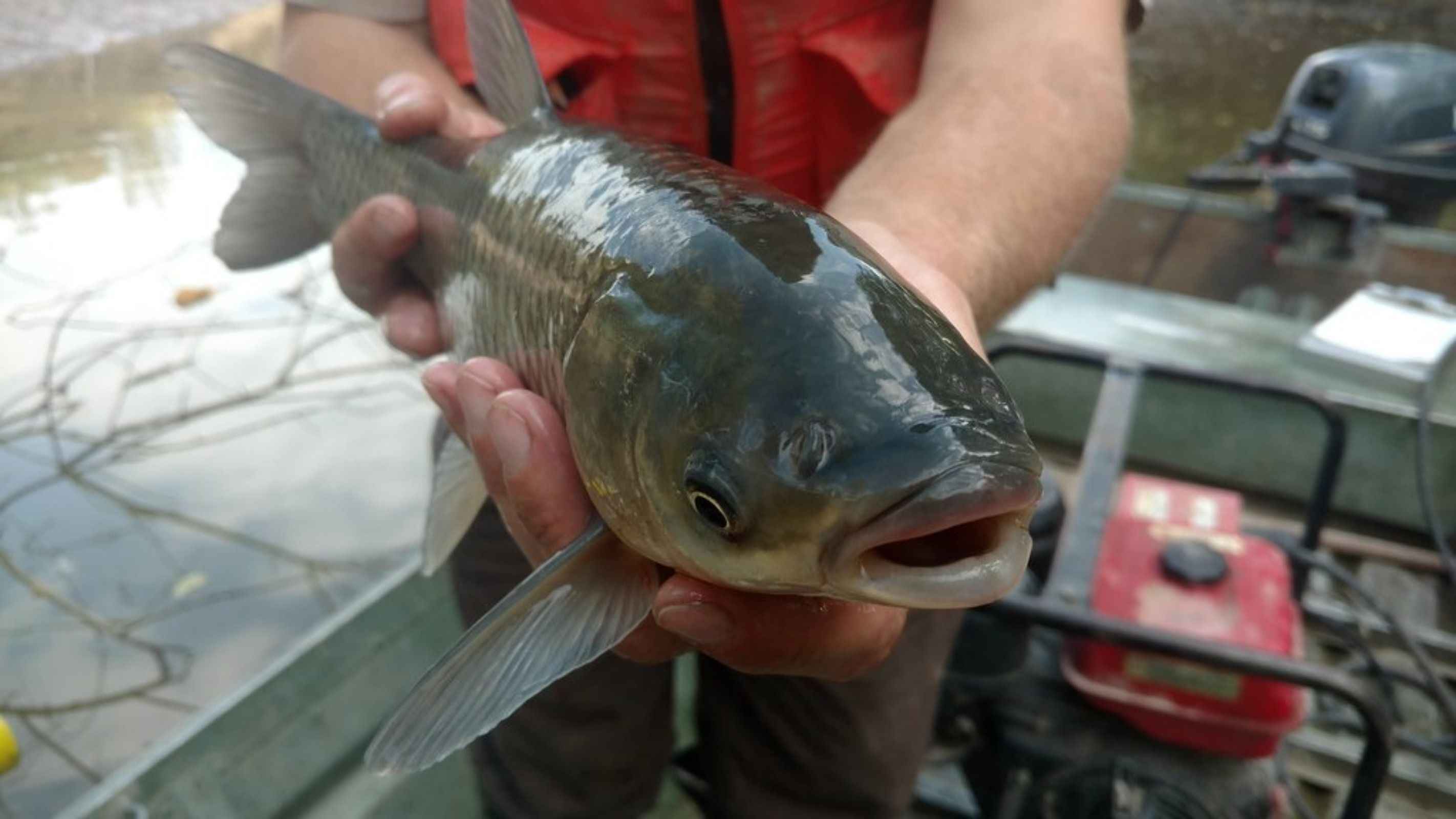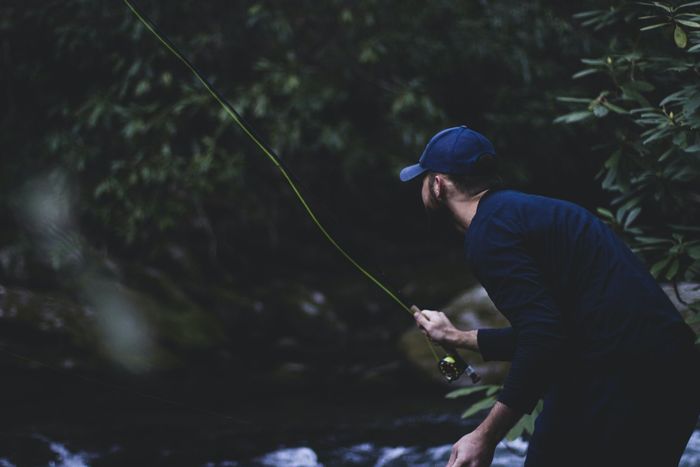Tips on Fly Fishing for Grass Carp
Targeting grass carp is challenging, but we have top tips on how to hook these sly fish.

Grass carp are neither lookers nor a coveted trophy, but these smart and sly fish are one of the biggest challenges to catch on a fly. These formidable fish can put up a fight and can grow large, thus earning a spot on many anglers' bucket lists as a boast-worthy achievement.
Originally native to Asia, grass carp were introduced to the United States and Europe to control the growth of aquatic vegetation in specific ecosystems. Today, they are one of the largest species farmed in aquacultures and are capable of thriving in a vast range of temperatures.
Although their diets consist mainly of plants, grass carp will feed on almost anything if the opportunity presents itself. They are fast growers and can easily grow more than 12 inches in a single year given the right environment. With an average of around 24 to 48 inches in length, these large individuals are intelligent but docile herbivores, often labeled as cattle of the rivers.


1.Sight Before You Fly
Grass carp are unique because they won’t chase a fly or a streamer. As vegetarians, they will slowly rise toward the surface to feed or placidly graze in schools around shallower waters. When searching for these fish, you’ll want to look for murky water so that you can increase your chances of success – less visibility means less chance of spooking them away.
When temperatures are a bit warmer, grass carp will cruise the shoreline and feed in the bottom of shallow waters. Sometimes, you may even spot their anal fins breaking the surface, which is known as “tailing” and is one of the best times to catch them. Tailing fish have their guards down and are focused on feeding, which means you can approach them easier.
Grass carp typically feed in the early mornings or late evenings, which is the ideal time to angle for them. They are more aggressive and less wary as they eat and are more likely to take your fly.
2. Silent Bob
Grass carp have large lateral lines that are highly sensitive to vibrations in the water and can even detect movement on land nearby, which means a stealthy approach is key. These skittish fish can be spooked by your footsteps, snapping twigs, and even the shadow of your rod on the water. We suggest trekking on foot on the banks or drifting in a stable boat with the motor off.

You’ll want to look for a spot where nearby vegetation is floating or falling in turbid water, whether blown by the wind or falling from overhanging trees. This is like natural chum for grass carp, meaning half the work is already done for you.
Secondly, silently plan your approach so that you can see in which direction they’re swimming. The goal here is to get ahead of them at a distance of at least 15 feet away so that you can gently (great emphasis here on gently), cast the fly in front of them. If you’re too close, the splash from your fly breaking the surface will spook them, and there won’t be another opportunity for you from there on out.
Once you've successfully cast, the goal is to wait for the grass carp to swim towards your fly, so make sure that it's suspended just slightly beneath the surface. Patience is key because they will not readily attack, so slowly and gently sway your fly similar to the way a blade of grass might act in the water, enticing the grass carp to gulp it down. Remember, you want the fish to hook itself, so don’t yank or jerk the hook abruptly when they bite. Once the fish has your fly, simply lift the rod slowly towards the 12 o'clock position so that when it tries to swim away, it will set the hook in its mouth with minimal effort on your end.
3. Geared for Success
No matter what gear you use, it needs to be accurate and sensitive so that you can control it with precision. Presenting a fly to grass carp involves small, subtle movements to get them to bite and requires you to cast with pinpoint accuracy. You don't need a lot of lines – a reel that can hold at least 200 yards is more than enough, and anything smaller will work equally well. Make sure your rig has good drag since grass carp can put up quite a fight, and they can last longer in a battle than a brown trout.
Despite their docile nature, don't underestimate the strength of grass carp – these fish can easily bend your rod. Most anglers typically use anywhere between a 6wt to 9wt medium-heavy rod with a ten-pound tippet to battle it out with these freshwater fighters.
You'll also want to use a small hook since these fish can be skittish and may toss your bait if they feel the hook. Small circle hooks at 4-1/0 not only remain stealthy but help you release them easier as well.
4. It's Not A-bait the Fly
Grass carp might be intelligent, have good memories, and are naturally on alert, but they’re not particularly choosy with their food. Unlike largemouth bass and smallmouth bass, these fish are vegetarians, so anglers have tried anything from lettuce and grass as bait, although dough balls are a common favorite. Other options include sweet corn, cherry tomatoes, berries, and even watermelon. The trick is to just use enough to cover up the hook, so the fish don’t see it and get spooked.
When it comes to fly patterns, anything that, for lack of a better term, looks “buggy”, will be enticing to this fish. You’ll need to experiment with different sizes and colors until you find one that the grass carp in your area prefer, although anything brightly colored or hairy-looking works well. Oddly enough, the fly pattern is not vital when fly fishing for grass carp, since your stealth approach is ultimately what determines your success.
Carpe Diem
It's easy to see why many anglers don't fly fish for the grass carp – it takes stealth and patience to play their game. Moreover, they're not exactly photogenic and can even be unusually slimy. However, these resilient fish play an important part in the ecosystem and are extremely underrated as game fish.



